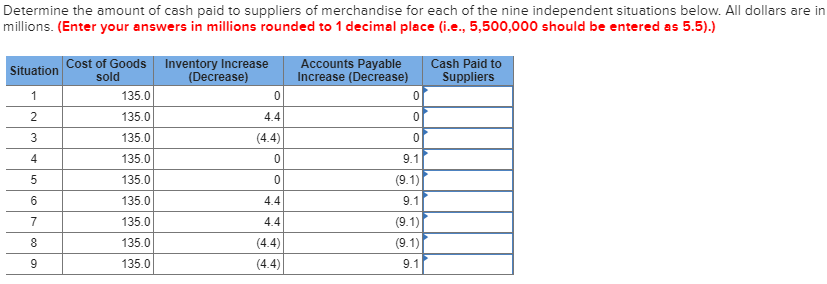Gap Trading Strategies Analysis A Beginners Guide
For instance, understanding how different types of gaps behave can guide traders in setting entry and exit points, managing stop-loss orders, and identifying potential trend reversals. Moreover, awareness of how gaps are influenced by external factors, like earnings reports or significant news events, can help in anticipating market movements. Gap trading, from the perspective of an investor or trader, is a strategy that capitalizes on price gaps which are identified on the price chart of financial instruments. These gaps occur when the opening price of an asset significantly differs from the previous day’s closing price, creating a visible gap on the price chart. To trade gaps successfully, one must first identify the type of gap and the underlying cause.
Strategies for Trading True Gaps
However, one that clearly stands out for its simplicity and intuitiveness is the FVG indicator by Nephew_Sam. This indicator shows FVGs on your current chart that are yet to be tapped. It also has the option to overlay FVGs from other timeframes onto your current timeframe.
True Gaps vs. Non-True Gaps
In a scenario like this, stop losses could be placed below the prior range lows and moved to the break-even point once gains in the trade equal the initial risk parameters. Gap formations tend to happen most often in market environments that are characterized by high levels of price volatility. For these reasons, gap trading strategies require protective stop losses. Essentially, the importance of these protective techniques is even more important (when compared to trading styles with a slower approach) because the potential for loss is greater.
We recommend that you read a series of articles about Volume Spread Analysis here. When the markets are closed, some events can occur that will affect the price when the exchange opens again. There is an example of best 5g stocks to buy in 2021 a gap on the S&P-500 E-mini futures chart below. Similarly, a gap-down occurs when the opening price of a new candle is well below the previous candle’s closing price and its low.
As a rule, gaps mean that trading is going to speed up and traders will have to make decisions quickly, which may be unacceptable for beginners. As a rule, a gap is considered closed (filled) when the price moves back to the original pre-gap level but this is not a strict rule. After the trading session on Monday, trading was stopped for clearing. At the opening of Tuesday’s candle (number 3) we also see the formation of a significant gap which is not very typical for S&P-500 futures during the week.
Different Types of Price Gaps
This behaviour is based on the idea that the initial reaction causing the gap might be exaggerated or temporary, and the price could revert to its previous trend. For example, if a gap occurs relatively early in a trend, then it is probably a breakaway gap or a runaway gap, which lets the trader know the price likely has further to run. The size of the gap, the volume during the gap, and the subsequent price action can all provide clues about the potential trading opportunities. To learn more about how this strategy works and how it can impact price gaps, take a look at this detailed article on Reversal Trading Strategy. The more strategies you’re familiar with, the better equipped you’ll be to interpret price gaps and make effective trading decisions. For example, let’s say a stock closes at $100 one day and then opens at $110 how to start a real estate brokerage the next day.
When a gap has been filled, this means the stock’s price has returned to its «normal» price; the pre-gap price. This happens quite often as the price settles after irrational buying and trading has stopped after the news. After the formation of an FVG, a trader fades the gap by taking trades in an attempt to ride the price back into the gap with the hope of filling it.
Bullish Fair Value Gap
The breakaway gap strategy capitalizes on the momentum generated by breakaway gaps. Look for a strong breakout from the consolidation phase and enter a position in the direction of the gap. Use appropriate risk management techniques, such as setting stop losses and trailing stops, to protect your capital. A true gap occurs when the current day’s open is completely outside of the previous day’s range. In the case of a true gap up, the market would be opening above the prior day’s high.
- These guidelines form the cornerstone of my teaching on gap trading, emphasizing disciplined, strategic trading.
- The gap is filled relatively quickly but it continues to act as resistance at the horizontal yellow arrow, suggesting that downside potential remains.
- We provide you with some backtested examples of how to trade gap fills, but unfortunately, the low-hanging fruit has been “arbed” away.
- For instance, understanding how different types of gaps behave can guide traders in setting entry and exit points, managing stop-loss orders, and identifying potential trend reversals.
- Note that if the market gaps up or down and rises or falls below the opening price, then you get a solid signal to enter a trade.
- Traders anticipate the direction of the gap’s move and plan their entry and exit points accordingly.
It’s important to balance the desire for significant returns with the need for security and prudent money management. Not only do they make frequent appearances in stock charts, but gaps create opportunities for significant profits due to the volume and volatility that accompanies them. Gaps often materialize due to a catalyst – a bad earnings report, increased guidance, a company scandal, etc. News is pocket option forex broker review often released after hours or in premarket, where experienced traders and investors tend to throw their weight around.



